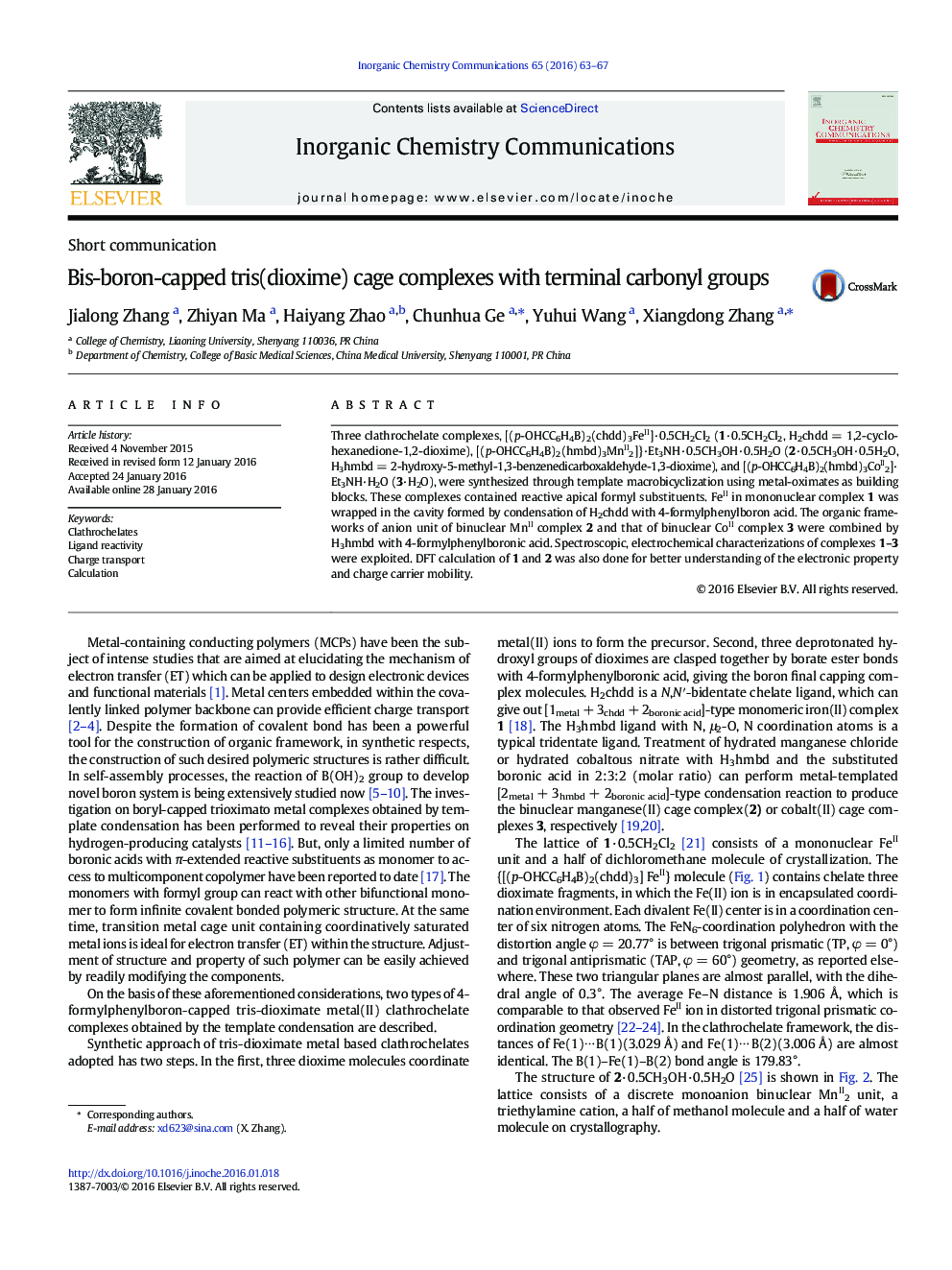| کد مقاله | کد نشریه | سال انتشار | مقاله انگلیسی | نسخه تمام متن |
|---|---|---|---|---|
| 1301262 | 1498925 | 2016 | 5 صفحه PDF | دانلود رایگان |
• Mononuclear and binuclear clathrochelate complexes obtained by the template condensation
• The terminal formyl group gives opportunity to form infinite covalent bonded polymeric structure.
• Complexes are sensitive to the external electric field.
Three clathrochelate complexes, [(p-OHCC6H4B)2(chdd)3FeII]·0.5CH2Cl2 (1·0.5CH2Cl2, H2chdd = 1,2-cyclohexanedione-1,2-dioxime), [(p-OHCC6H4B)2(hmbd)3MnII2]}·Et3NH·0.5CH3OH·0.5H2O (2·0.5CH3OH·0.5H2O, H3hmbd = 2-hydroxy-5-methyl-1,3-benzenedicarboxaldehyde-1,3-dioxime), and [(p-OHCC6H4B)2(hmbd)3CoII2]·Et3NH·H2O (3·H2O), were synthesized through template macrobicyclization using metal-oximates as building blocks. These complexes contained reactive apical formyl substituents. FeII in mononuclear complex 1 was wrapped in the cavity formed by condensation of H2chdd with 4-formylphenylboron acid. The organic frameworks of anion unit of binuclear MnII complex 2 and that of binuclear CoII complex 3 were combined by H3hmbd with 4-formylphenylboronic acid. Spectroscopic, electrochemical characterizations of complexes 1–3 were exploited. DFT calculation of 1 and 2 was also done for better understanding of the electronic property and charge carrier mobility.
Complexes of electroneutral mononuclear and anionic binuclear cage complexes with metal oximates cores are described. Terminals of the cage are capped by tetrahedral boron atoms through covalent and coordinate B–O bonds. Theoretical investigation for the electron distribution of the complexes under external electric field of different strengths and directions indicates that the complexes are sensitive to the electric field.Figure optionsDownload as PowerPoint slide
Journal: Inorganic Chemistry Communications - Volume 65, March 2016, Pages 63–67
